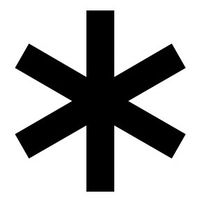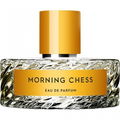Body Paint was a long-time phantom; when I heard over three years ago that Marc-Antoine Corticchiato had designed something new for a brand that had not particularly excited me up to that point (and still hasn’t), I naturally wanted to test it: easier said than done, as I spent about a year visiting one 'Vilhelm Parfum' point-of-sale after another, my inquiry about Body Paint consistently met with astonishment: no, never heard of it, no, I surely mean Chicago High from the same year (which was also speculated to possibly be by Corticchiato), no, there is no such perfume. In a store in Vienna, a printed 'Vilhelm Stock & Release' list was even presented as quasi-official proof: Body Paint does not exist… What was going on? A fragrance, although listed on the company's website, completely unknown in the dedicated sales outlets!?
I don’t know, just that I was probably not alone in this, Gentilhomme, apparently had a similar experience, merci beaucoup for your decant back then, extremely helpful, I could have searched much longer. When I finally had Body Paint in front of me, it quickly became clear that the scent is an alien, a foreign body in the Vilhelm spectrum.
The opening, a mix of solvent, wall paint, and pear, blended with something plant-like and vegetable (sliced green and red bell peppers here), slightly chlorinated on top of that. The press text mentioned the year 1988, which makes me think of the early versions of Maître Parfumeur et Gantier's Garrigue and its slight chlorinated note, or the contemporary interpretation of it, Pluie Noire (2017). The whole thing feels like a ritualistic-scenic cleansing, which gradually makes way for a much more classical, aseptic note, here in the lead role - the clove: very clear, almost monolithic, yet without the often accompanying oriental warmth, the still-present top notes seem to set limits for the clove here. This is supported by other spices, for me rather dried mace flowers than nutmeg per se; and yet, a kind of nutmeg note as celebrated in the dry Cacharel pour Homme (1981) of the 80s is not entirely out of the question. Other references, the clearest of which might be Comme des Garçons' Guerilla 1 (2008) where the combination of clove & fruit (pear) plus champaca and overall darker spices could shine. Body Paint remains consistently more transparent, finer, yes, more modern across the board, a slightly translucent oakmoss note lends the fragrance a seriousness in the drydown that counters the initial sprightliness, only on fabric do I notice slight artificial wood residues the next day, which I could have done without.
Even though Body Paint sounds quite solitary with all these references at first, I gradually had to place it closer to a variation of Corticchiato's works: the notes I referred to as pear/solvent could easily pass as Eau de Vie, that is, something high-proof, distilled, as the perfumer first introduced with the delightful triple-mastic gem Corsica Furiosa (2014), later picked up in the ambrette-heavy Cri de la Lumiere (2017) [which in turn spins off the ambrette/spirit note from Jacque Polge's magnificent Chanel No 18 (EDT version!) (2007)], and most recently appeared in the lovelier, less high-proof, but thoroughly potent Salute! (2019). The spirit note from Corsica Furiosa could serve as an 'organic' counterpoint to Body Paint's solvent facet. Naturally, such a note is rather fleeting, and overall I would describe the volume of the composition here as narrow; it quickly feels intimate, but I sense it reviving again and again over hours…
All in all, Body Paint oscillates between the long tradition of clove-heavy fragrances, earlier Comme des Garçons artificiality, and Corticchiato's own spirit distillates. A modern, completely devoid of any citrus, fresh and somehow spring-like perfume, suitable for non-picky individuals who enjoy well-executed Eau de Vie / solvent notes, as well as for neo-clove fetishists who want to renounce the Caron magic of past decades.









 Top Notes
Top Notes  Lemon
Lemon Pear juice
Pear juice Red chili
Red chili Green pepper
Green pepper Heart Notes
Heart Notes  ISO-E-Super
ISO-E-Super Nutmeg
Nutmeg Clove
Clove Base Notes
Base Notes  Cedar
Cedar Oakmoss
Oakmoss Ambroxan
Ambroxan


 Renardz
Renardz Katzevogel
Katzevogel Gavarrus
Gavarrus RedBull
RedBull



